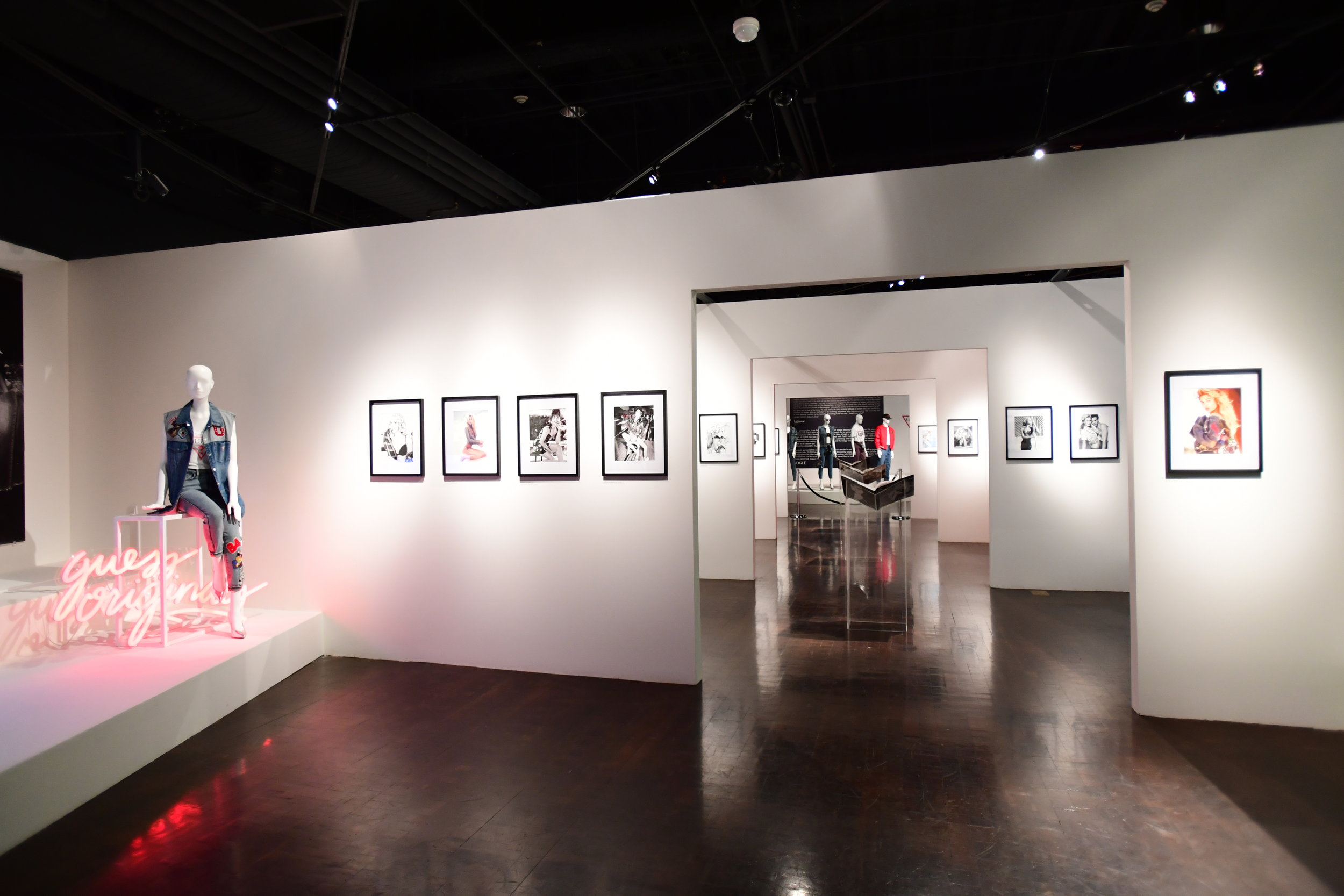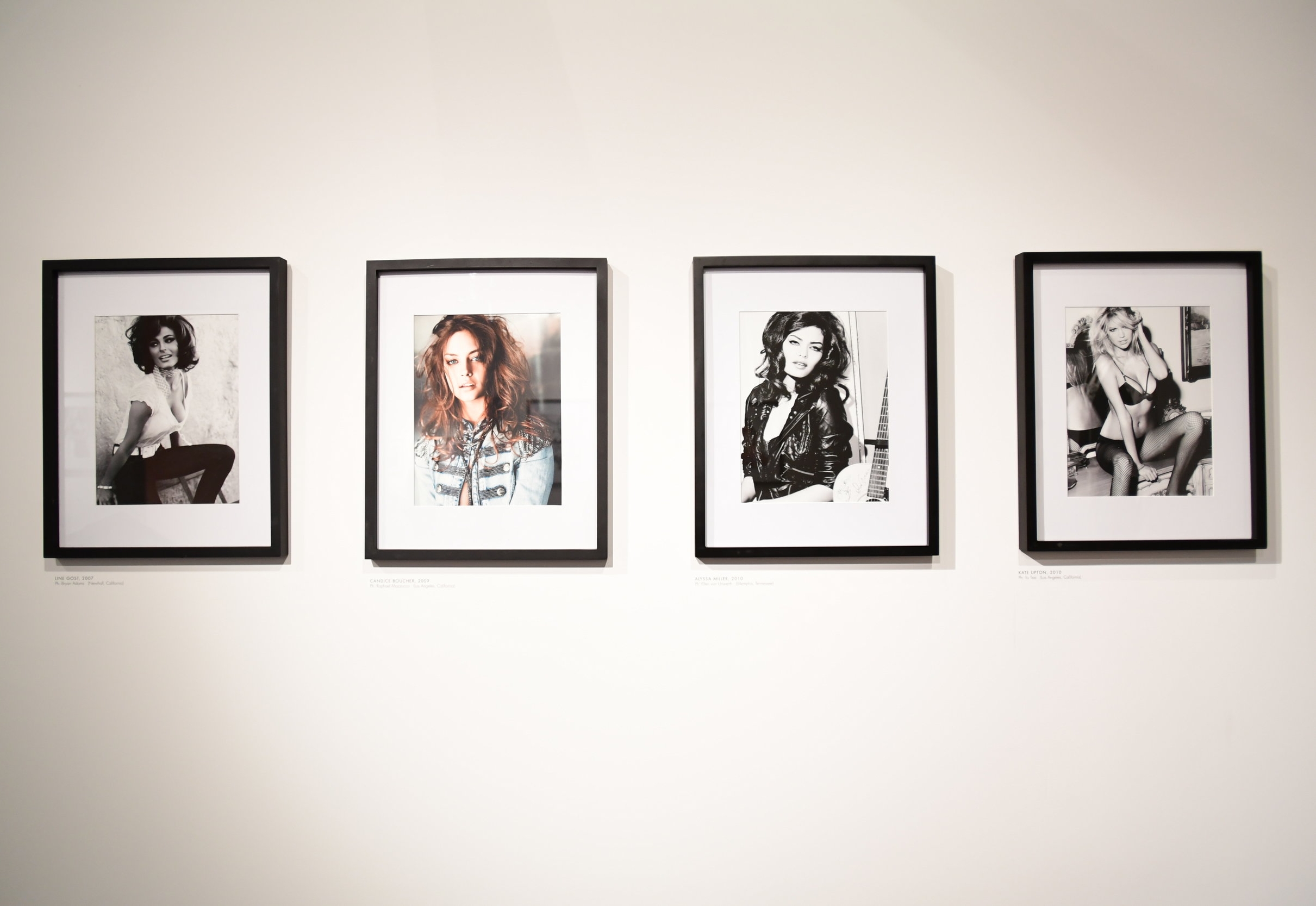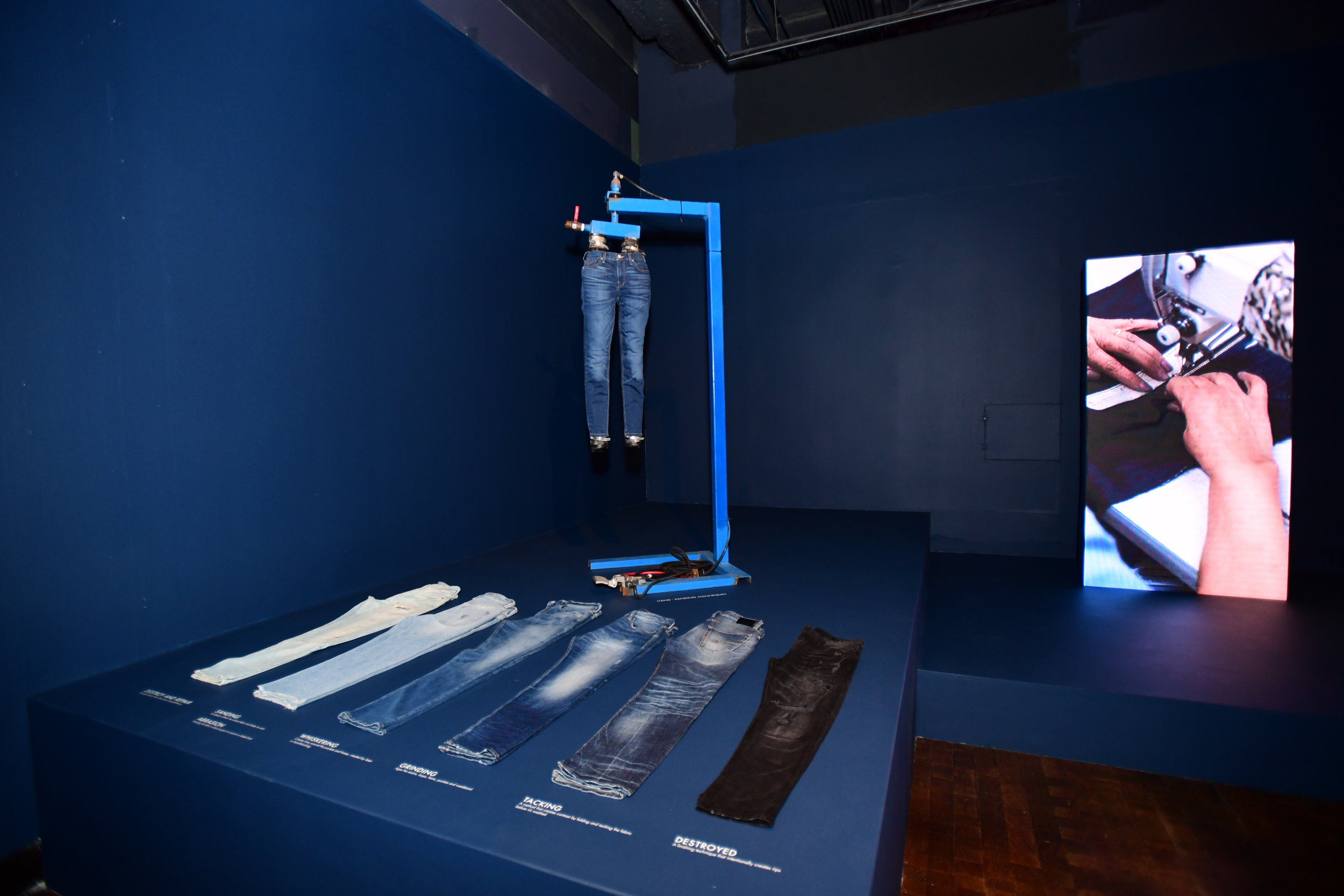GUESS: 35 Years & Still Dreaming
Fashion Institute of Design & Merchandising (FIDM) Museum & Galleries (June 6 - July 8, 2017)
Guess led a new wave of designer jean brands in the early ‘80s, imprinting their triangle emblem and sexy, young aesthetic into popular culture. At a time when Seventh Avenue was booming, Guess embraced Los Angeles as its headquarters and creative muse. Perhaps even more memorable than their clothing is the brand’s signature black-and-white advertising campaigns that began in 1986, and which launched the modeling careers of famous blondes Claudia Schiffer, Anna Nicole Smith, and Gigi Hadid, who started her career modeling with Baby Guess.[1]
GUESS: 35 Years & Still Dreaming, a retrospective at the FIDM Museum & Galleries paid homage to the legacy of Guess Girls campaigns and the brand’s place in pop culture, as well as the production process of their signature washed jeans. The exhibition was a celebration of the company’s anniversary and was timed to align with the unveiling of the family’s new art museum, the Marciano Art Foundation, located in the Koreatown neighborhood of Los Angeles (about a 20-minute drive from FIDM). The Marciano Art Foundation is comprised of recently collected works (they began collecting art in 2006) with a particular focus on pieces from the 1990s to the present by LA-based artists.
Although designer jeans are today selling for over $2,000[2] and most Americans own at least one pair (although perhaps not at that price point), it’s uncommon for fashion exhibitions to focus on commercial jean brands. The typical fashion retrospective presents a variety of garments by a designer or designers in a set time span. Sometimes the curator will choose a few sketches, photos, or prototypes that reveal a glimpse into the revered creative process. GUESS: 35 Years & Still Dreaming follows a different format. Guess Inc. is a commercial brand without a sole designer leading creative. Appropriate for a museum connected to education, this retrospective celebrated the pillars of commercial fashion – production and marketing.
George, Maurice, Armand, and Paul Marciano moved to America in 1977 from Marseille, where they spent their childhoods as sons of an Orthodox rabbi.[3] In 1981, the four brothers brought Guess jeans into the world from a rented 700-square-foot-office[4] in downtown Los Angeles. In the 35 years since, the west coast city has become a designer jeans capital and the Marciano’s company has grown to compete with heritage denim brands like Levi’s, founded 128 years earlier in a city only 380 miles north. The company went public in 1996 and in 2007 the company’s stock reached an all-time high of $57.20 a share,[5] making Maurice and Paul billionaires.
The industry is currently grappling with the fall of retail and the increased decentralization of fashion authority. The most valuable brands in the world right now are Nike, H&M, and Zara (in that order).[6] Although unintentional, this retrospective presented an alternative curatorial model that explored fashion as a commercial enterprise, and as a ubiquitous facet of everyday life. Most fashion exhibitions present the narrative of the designer as an auteur and the most coveted and therefore most rewarding position available. This retrospective challenged the assumption that creativity is the ultimate reward for a designer, instead of commercial success.
With ‘80s pop classics by Robert Palmer and George Michael floating through the air, the retrospective was divided into two galleries, “Denim is our world” and “Decades of GUESS: Campaigns, Pop Culture + Color.” Gallery one was an ode to the artistry of producing a pair of washed jeans, a technique at the foundation of the company’s success. Guess popularized the pre-washed look in the 1980s – a time when achieving the worn-in look required actual wearing.
Contrary to nearly any other consumer product, jeans can actually increase in value with distress. Most fascinating was the exhibition display of washed jeans presented with their secret ingredients. “Ozone acid wash” jeans were shown with a handful of shoulder pads. According to the description, “the ozone wash process saves up to 1,800 liters of water. Shoulder pads are reusable and used in conjunction with ozone wash – an ecofriendly rinse that replaces bleach.” There was a tray of golf balls, representing “Golf Ball Rinse, a gentle method used to soften rigid fabric without chemicals.” These two examples are evolutions on one of the oldest designer jean wash methods, the acid wash (no acid is used in the process). Fiery red pumice stones represented this technique that involves washing denim with stones and various chlorine mixtures.
If the first gallery is a beginner’s course in fashion production – from fiber to finishing – the second is a case study of one of the most consistent branding strategies of the last four decades. Guess ads have portrayed a certain young, pin-up style white femininity in a Californian setting for the last 35 years. From Claudia Schiffer to Kate Upton, their sultry muse of the moment is always predictably styled with plenty of cleavage and wind swept hair. Shiny and shirtless, Joe Jonas is the latest Guess hunk selling underwear and watches to the masses.
In this second half of the retrospective, each decade was represented by a pair of mannequins wearing forgettable looks from the company archive standing behind a small retro television set playing commercials on loop. A standout piece was a film noir story from 1996 titled, “Cheat,” starring Juliette Lewis, Traci Lords, and Harry Dean Stanton. Lewis plays one of Stanton’s ‘girls,’ who goes undercover (wearing Guess) to expose cheating husbands. Watching this commercial was a reminder of the Marcianos' true muse, Los Angeles. Their aesthetic commitment to Hollywood blondes and film noir made their advertisements instantly recognizable.
For most consumers who were alive during this period (this writer included), it is the marketing of Guess products that is memorable, not the clothes themselves. This attitude seemed to be shared by the curators, who chose to focus on the production and marketing. After all, for a retrospective on a commercial brand like Guess, do the clothes even really matter?
Notes
[1] (http://www.vanityfair.com/style/2014/02/gigi-hadid-interview)
[2] (https://totokaelo.com/vetements/re-worked-denim-red-stripes/black/N21DB5)
[3] (https://www.forbes.com/sites/abrambrown/2015/07/01/the-fall-of-guess-jeans-and-the-marciano-brothers/#1d7bbf121469)
[4] (http://www.latimes.com/business/la-fi-guess-marciano-20150715-story.html)
[5] https://www.forbes.com/sites/abrambrown/2015/07/01/the-fall-of-guess-jeans-and-the-marciano-brothers/#701083231469
[6] (https://fashionista.com/2017/03/top-fashion-brands-2017)





